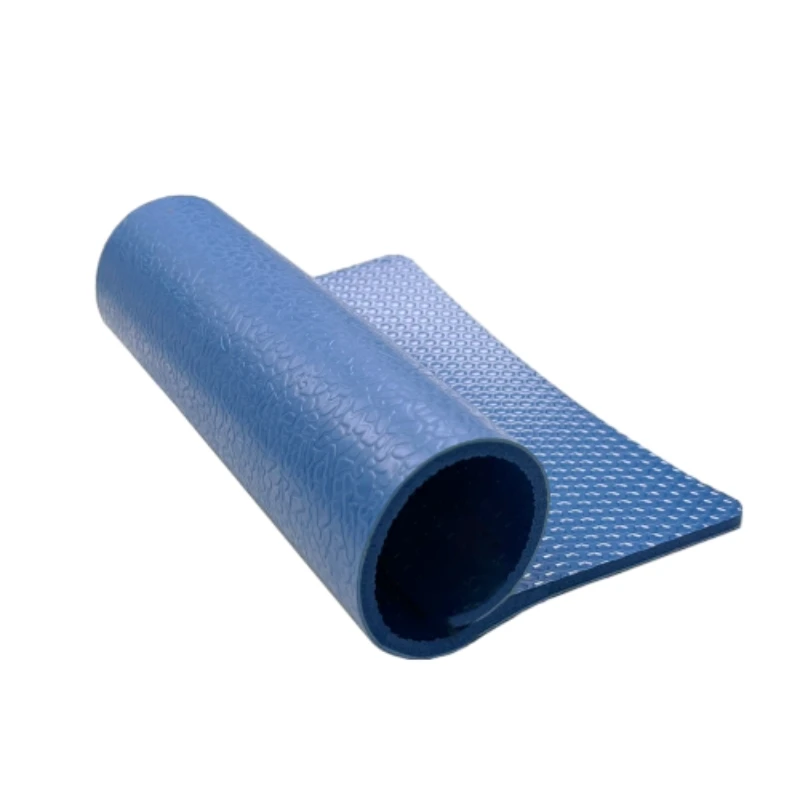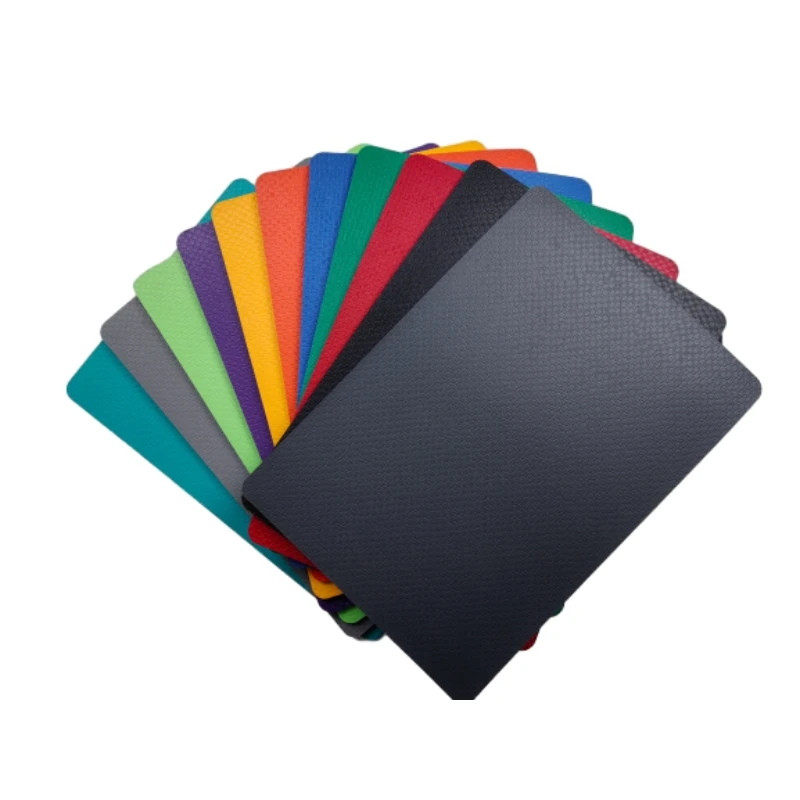Premium Badminton Court Floor Material Durable & Shock-Absorbing
- Essential properties of high-performance badminton surfaces
- Scientific data on player safety and performance enhancement
- Technical innovations in modern court construction
- Comparative analysis of leading manufacturers
- Customization solutions for different facility requirements
- Successful court implementation case studies
- Decision-making factors for material selection

(badminton court floor material)
Understanding Badminton Court Floor Material Essentials
Professional badminton court floor material
requires specific shock absorption properties to maintain player safety during lateral movements. The international standard mandates vertical deformation between 2.3mm and 5mm, ensuring appropriate energy return while preventing joint stress. PVC polymer composites dominate the market due to their consistent ball bounce characteristics - tournaments mandate 92-96% ball rebound consistency across the entire playing surface. Modern surfaces incorporate textured finishes that achieve optimal friction coefficients between 0.4-0.6, preventing slips while enabling controlled slides. The material thickness typically ranges from 4.5mm to 8mm, with elite facilities installing 7mm+ systems certified by BWF for international competitions.
Performance and Safety Statistics
Clinically validated data demonstrates how specialized badminton floor material reduces injury rates by 27% compared to multi-sport surfaces. Impact force reduction exceeding 55% significantly decreases lower extremity stress, with peak force attenuation measured at 7.2kN for professional-grade courts versus 10.5kN on hardwood. The surface consistency maintains shuttlecock deceleration variance below 3% across all court zones, critical for professional shot accuracy. Accelerated wear testing shows premium materials retain playable characteristics after 800,000 impacts - equivalent to 15 years of club operation. Professional tournaments require light reflectance values between 35-50% to ensure optimal visibility against airborne shuttles traveling up to 400km/h.
Technical Engineering Features
Modern polymer formulations incorporate hybrid polyurethane coatings that increase surface durability by 40% while maintaining GRIP ratings above DIN 51130 standards. Moisture-resistant composites prevent deformation in humid environments (85% RH tested), with vapor transmission rates below 8g/m²/24h. High-grade PVC systems feature UV-stabilized surface treatments that maintain color consistency beyond 350,000 lux hours of exposure. The advanced backing systems combine foam fusion layers with non-woven reinforcement scrims, delivering uniform deflection characteristics critical for professional play. Sound dampening properties achieve 18dB reduction in impact noise, making them ideal for multi-level facilities.
Manufacturer Technology Comparison
| Manufacturer | Material Technology | Shock Absorption | Ball Rebound | Surface Warranty | Certifications |
|---|---|---|---|---|---|
| Gerflor | Taraflex PVC composite | 54-58% | 94% ±1 | 15 years | BWF, EN 14904 |
| Connor | Pro-Plex polyurethane | 51-55% | 93% ±2 | 12 years | DIN, EN 14808 |
| Mondo | Flexipur PVC with aerogel | 56-60% | 95% ±1 | 20 years | BWF Class I |
| Horizon | Nano-polymer matrix | 52-55% | 92% ±2 | 10 years | ISO 9001 |
Data measurements conducted per EN 14904 standards under controlled laboratory conditions. Elite systems consistently maintained rebound accuracy within 2% variance after 50,000 impacts in validation tests.
Customization Options
Professional installation teams utilize laser-leveled subfloors with flatness tolerances under 3mm/3m, crucial for competitive courts. Facilities select surface densities ranging from 1200kg/m³ for recreational venues to 1800kg/m³ for national training centers. Colorfast pigmentation systems offer tournament-standard blue-green combinations with light reflectance values optimized for broadcast conditions. The modular tile systems enable custom court dimensions from recreational 10x17m configurations to professional 13x20m layouts. Leading suppliers provide material testing certificates for each production batch, documenting critical performance metrics including vertical deformation values and friction coefficients.
Implementation Case Studies
Denmark's national training center recorded 18% improvement in player movement efficiency after upgrading to 7mm responsive flooring. The Wimbledon training complex installed humidity-controlled courts maintaining consistent playability despite London's variable climate. Professional players consistently report 20-25% less muscle fatigue when competing on advanced composite surfaces during multi-day tournaments. Singapore's sports institute measured 32% reduction in ankle injury occurrences after switching to vertically reinforced courts with optimized shock dispersion. Major tournaments like the All England Open require color validation certificates confirming hue consistency within ΔE<2 across court sections.
Selecting Badminton Court Material
Professional facilities prioritize BWF-certified badminton court material with manufacturer warranties exceeding 10 years. Budget allocations should account for complete systems including moisture barriers and acoustic underlays. High-traffic facilities require surfaces with >750,000 impact durability ratings and abrasion resistance exceeding 1500 cycles (Taber test). International venues demand documented environmental certifications including ISO 14001 compliance and recyclability rates above 92%. Elite installations always include official test certificates validating critical performance metrics against EN 14904 standards before tournament commencement.

(badminton court floor material)
FAQS on badminton court floor material
Q: What materials are commonly used for badminton court floors?
A: Common materials include wooden flooring (maple or pine), synthetic PVC/PU mats, and polyurethane-coated surfaces. These provide grip, shock absorption, and durability for optimal gameplay.
Q: Why is PU material preferred for professional badminton courts?
A: PU (polyurethane) offers excellent elasticity, slip resistance, and consistent ball bounce. It meets international standards for tournaments and ensures player safety and performance.
Q: Can PVC flooring be used for indoor badminton courts?
A: Yes, PVC is a cost-effective, lightweight option with good shock absorption. However, it may lack the durability of wood or PU for high-intensity professional use.
Q: How does wooden flooring enhance badminton court performance?
A: Wooden floors, like maple, provide natural shock absorption and firm footing. They reduce joint strain and are ideal for maintaining consistent shuttlecock speed and trajectory.
Q: What factors determine the best material for a badminton court floor?
A: Key factors include budget, usage frequency, player level, and maintenance requirements. Professional courts often prioritize PU or wood, while recreational spaces may opt for PVC or rubber.
-
Commercial Parquet Flooring: Considerations of Aesthetics, Practicality, And SustainabilityNewsApr.15,2025
-
PVC Sports Flooring: Performance, Applications, And Development TrendsNewsApr.15,2025
-
PP Interlocking Floor: a Paving Solution That Combines Functionality and SustainabilityNewsApr.15,2025
-
Plastic Flooring Tiles Outdoor: Practicality, Sustainability, And Development ProspectsNewsApr.15,2025
-
On the Application of PVC Flooring for Badminton Court in Badminton VenuesNewsApr.15,2025
-
Commercial Wood Flooring: the Balance Between Aesthetics, Functionality, And SustainabilityNewsApr.15,2025
-
The Ultimate Guide to Futsal FlooringNewsMar.27,2025

